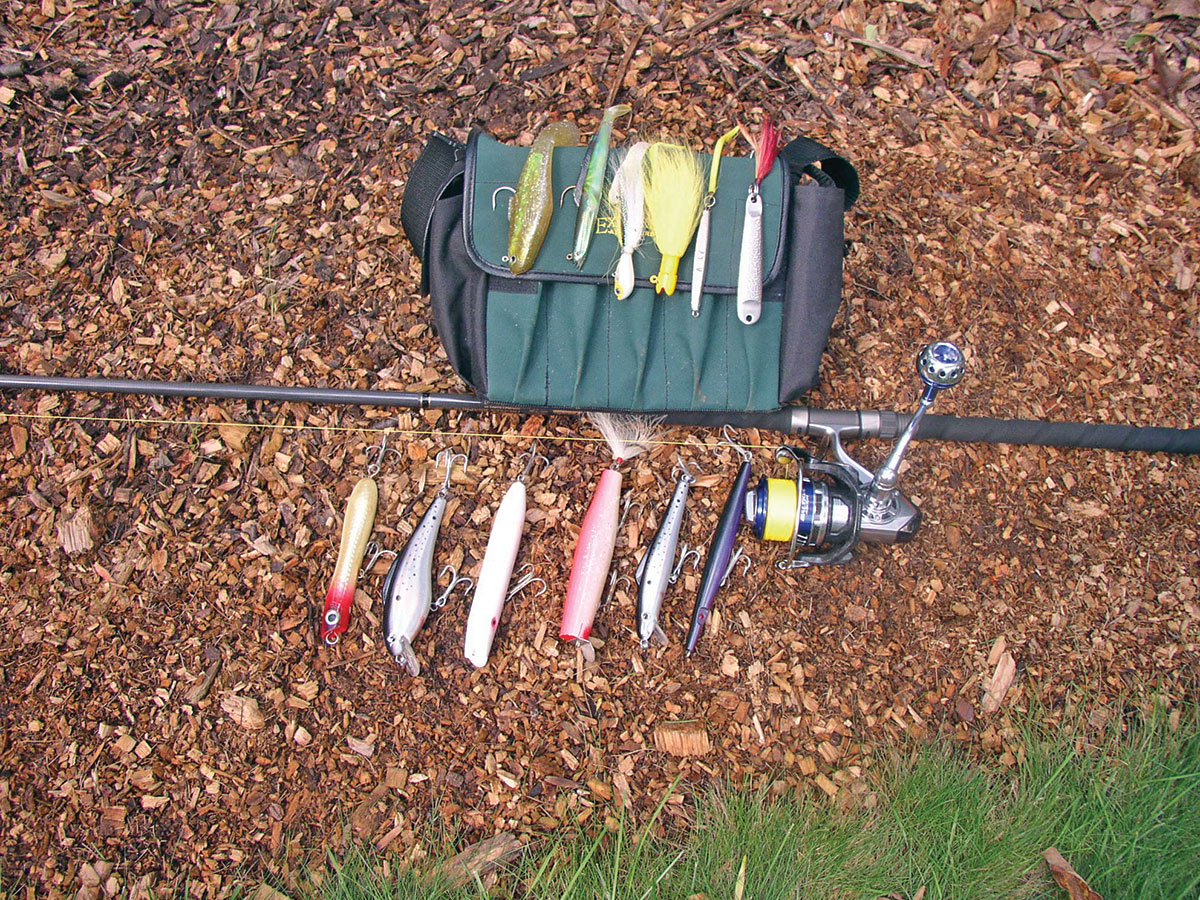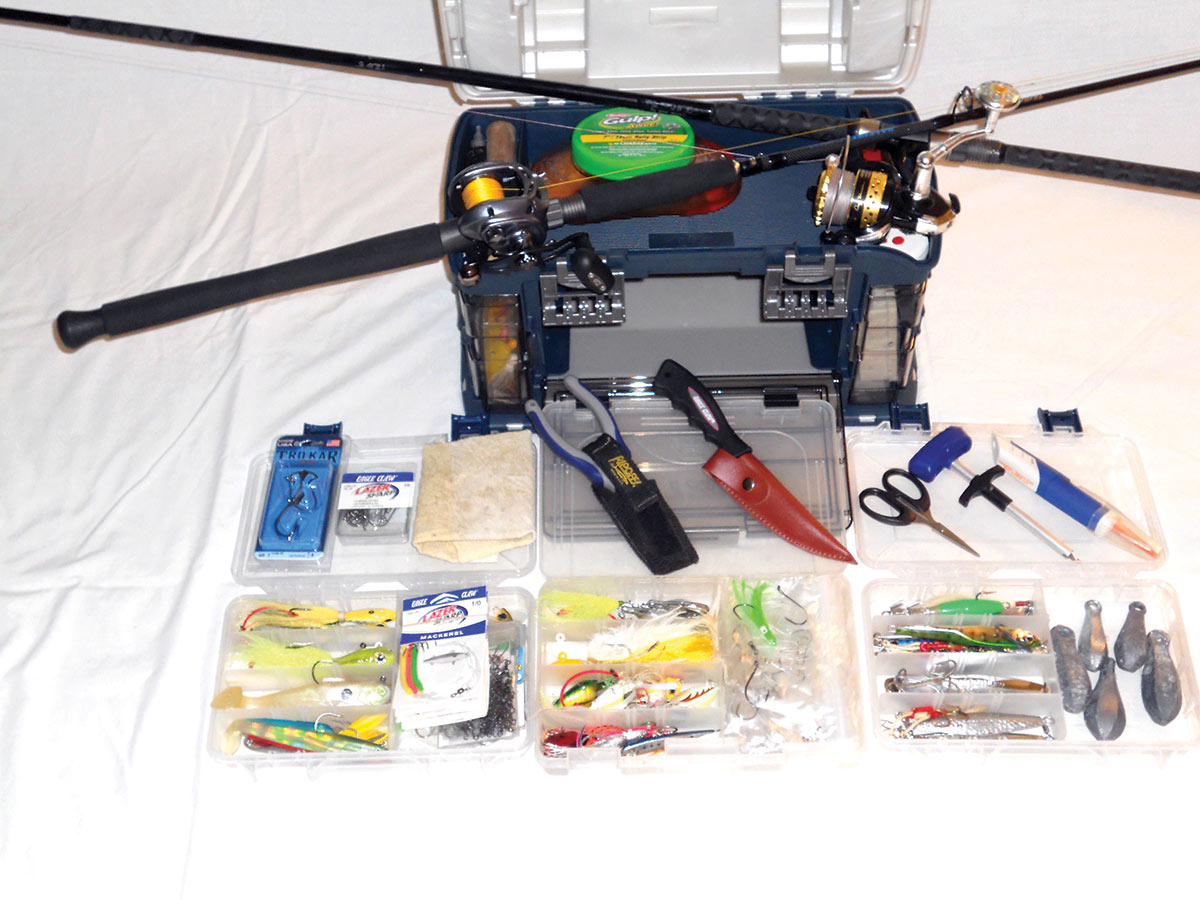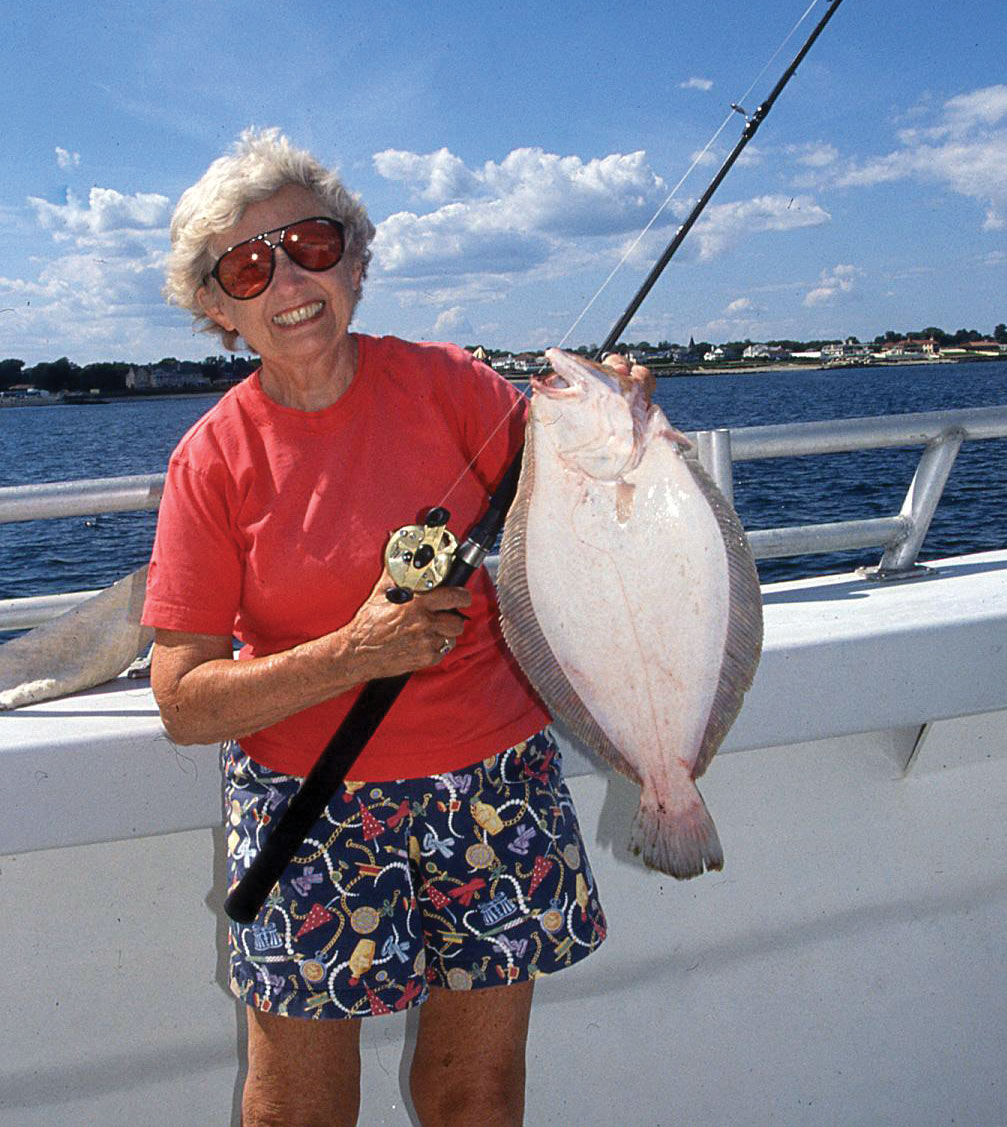
Now’s the time to get your tackle in order for the 2019 season.
Just think, a couple of months from now you’ll head for the basement or garage to get your fishing gear ready for a day of winter flounder fishing. But when you tucked it away on a pre New Year’s cod trip you failed to realize that what a year earlier was an array of perfect fishing outfits and tackle boxes loaded with gear had now lost much of the luster. It’s an annual dilemma that comes from a full season of fun fishing! Don’t fret, all is not yet lost; now you’ve got something to do with snow on the ground and icicles hanging from the house gutters.
Over a span of many years I’ve settled on the practice of getting everything in order early-on, so as to not interfere in my days spent on the water seeking my favorite saltwater scrappers. Bear with me, and hear the approach I’ve been successfully employing, which you may care to employ to enhance your enjoyment during the season ahead.
From Feet to Seat
Let’s begin with the footwear you use while fishing our rock jetties, be it shoes, ankle boots or waders. Historically I’ve employed steel-spiked golf soles on my footwear that I use to fish jetties and assorted rock and cement locations that are covered with seaweed or moss. After a few years the spikes wear out and can easily be replaced. Make certain to have soles placed on your new footwear to ensure your safety, or replace the spikes if they’re worn flat, which negates their effectiveness.
Check your foul weather gear and jackets worn during cold weather. You’ll probably find that most are generally in good shape, although I had a foul weather top split across the shoulder. A shoemaker did a nice job of gluing a patch in place that enabled its continued use.
Getting down to the tackle, my first objective is to check all of my rods, reels and the line itself. With the passage of time I’ve found even with tender care I’ve had damage to rods, especially their tip tops and guides. Should you observe a bent tip top or missing guide ring I suggest taking it to your local tackle shop and having them replace it, as most of the well-stocked shops can usually match up and replace any damage, even giving the windings a coat of varnish, which brings the rod back into new shape.
Often the reel seats of reels tend to appear covered with corrosion by season’s end, primarily the result of not washing the reel after a day’s fishing, which admittedly is often the case when I’m surf fishing. Here too, carefully clean the reel seats much like you clean your reels. Newer reels won’t be requiring as much attention as older models, as their metal parts are more resistant to corrosion. Whatever the case, it’s wise to use some auto cleaner and use an old tooth brush to clean the exterior of the reel, especially the clamps and screws on the reel seat, which tend to corrode easily.
With the exterior in like new condition, it’s then wise to unscrew an end plate and to clean the dirt and grime that tend to mysteriously accumulate. Here too, I use a stiff tooth brush with oil cleaner to remove anything adhering to the interior. Then I use reel lube to lubricate all gears and moving parts, ensuring nice, smooth performance in the upcoming season. Make certain to get some lube into the reel’s handle too, as often corrosion binds the handle from functioning effectively.
Reel Basics
Permit me to emphasize that if the reel isn’t functioning properly and appears to require pressure when retrieving it’s best to drop it off at your tackle shop, as they’re better able to determine what’s causing the problem and have the knowledge and parts to correct it. In the days before Facebook and other social media forms, the local tackle shop was the only place (outside of shows and club meetings) where anglers could find a little “hot stove” discussion while also addressing tackle and gear needs.
Many anglers who use older reels tend to spool braided nylon line as backing, as the actual line they use has such fine diameter that they would need an extraordinary amount of it to ensure the spool is almost filled to its edge, which enhances the retrieve ratio. Usually a couple of hundred yards of line is effective for multiplying reels, while with spinning reels it’s important for the reel spool is filled, as it then enhances the distance of the cast. It’s wise to remove any line that appears worn or where you’ve already lost much of the prime line because of line breaks as a result of everything from tangles to getting snagged on bottom to breaking as a result of poor or incorrectly tied knots.
This gets us to the terminal tackle. Initially I empty my tackle boxes and surf bags on a sizeable work bench in my basement. Both containers tend to be larger than most anglers use and towards this end I recommend too large is better than too small. The logic being that a reasonably large box will be capable of handling a wider range of terminal tackle and equipment, thus enabling you to always be prepared.
Over a span of many years I’ve often experienced times when I was fishing on a party boat chumming for bluefish and stripers, and the fishing was non-existent for the targeted species. To save the day the captain switched to bottom fishing for porgies and sea bass. The net result was that literally half the people on board weren’t prepared with bottom fishing terminal tackle. As such, by the time the mates got them re-rigged, those of us with the proper terminal tackle were already swinging tasty scrappers over the rail.
The larger box that I use accommodates everything I need to “be prepared” which is something I learned as a young Boy Scout. It includes both terminal rigs and lures that can immediately be put to use for whatever species, sea or wind conditions are encountered. As an example, on oft occasions I’ve caught an abundance of fluke on an afternoon gusting with southeast winds, when it took 8 to 10 ounces of sinker weight to hold bottom. There were often many others on board who continued with their 4-ounce sinkers, which wouldn’t hold bottom on the fast drift, resulting in their hooks and baits literally drifting 10 feet off the bottom! Having those heavy sinkers really saved many a day with a fine catch.

offshore.
The Ultimate Box
Most tackle boxes have one or two compartmented shelves that extend outward when the box is opened, or shelves that pull out from the side of the box. The key is having a tackle box of a size that can be easily organized, so that major items are readily accessible, with important accessories for tying bottom rigs, terminal bait rigs or lures and teasers at your fingertips.
Must have items with immediate access on the top shelf include a sharp knife for cutting bait to the size you wish and myriad other tasks as they develop. Many prefer a multi-use knife. A hook remover should share the space with the knife, although some anglers employ a pair of pliers that are put to multiple uses, especially those with a file to sharpen hooks. A tape measure shares easy access space as well, as you can quickly extend the tape and in an instant know whether you’ve got a keeper or throwback. A thin, old towel comes in handy too.
Among the primary items of essential terminal rigging it’s good to have a half dozen very small plastic boxes that fit into the compartmented shelves. I like to keep items such as three way swivels, barrel swivels, snap swivels, snaps, and sinker connectors in those easily accessible containers. To use these parts of terminals rigs you’ll also require leader material, including monofilament, nylon coated cable and stainless steel wire. These are best stored in the bottom section of the box and serve as backup if you run out of your pre-made rigs.
Let’s not forget lures. A tackle box with divider shelves enables you to store diamond and Vike style jigs, bucktails and plugs of your choice in the slots.
While for years I always made my own rigs, anglers today can readily purchase excellent rigs designed for the species you plan to target. Some have hooks included, while with others you simply attach a snelled hook. These rigs are coiled in moderate size plastic packages, so they can be held together with an elastic band. With respect to snelled hooks, which are snelled to 8 to 12 inches of leader material, it’s wise to keep a half dozen of each size. In that way you’re always prepared for targeting everything from winter flounder to husky codfish.

Beach Preparedness
With respect to surfcasters, bulkhead anglers and rock jetty jockeys the use of tackle boxes is simply impractical on the locations you’re fishing. They are, however, useful for all of what I’ve previously covered, and can be kept in the car as you travel from spot to spot. The key, however, is planning what you’ll be using on a given day of fishing, be it winter flounder from river bulkheads, blackfish from rock jetties or stripers and blues from the sandy beaches.
A shoulder bag is the ideal way of containing sufficient terminal tackle, which should also carry the natural baits such as mussels, clams, squid, sandworms and bloodworms or other fresh bait. Thus when you park your car and walk to the location where you’ll be casting, you can simply rest your shoulder bag on the ground and get fishing. And, of course, don’t forget a rodholder that can be pushed into the sand, helping to keep your reel free of getting sanded, and also for dead rod fishing your outfit.
However, if it’s strictly surf and jetty fishing you’ll be doing and you’ll be using lures, I’ve found it best to use a jacket or vest with sufficient pockets to hold the terminal leaders and lures I plan to use. Towards this end I carry three or four of each favorites, including swimming plugs, poppers, block tin or stainless steel squids and bucktails. Also carry a tiny jar of pork rind (if you can find them) or other popular strip baits like Fat Cow or Otter Tails. Pre-tied leaders from home most often include teasers to entice strikes, which surprisingly often out-fish the primary lure.

When targeting big stripers and blues from rock jetties and the surf I often carry a collapsible gaff, which measures 12 inches in length when closed, and snaps open to 24 inches, which is extremely effective when you’re standing on rocks strewn with slippery moss at the water’s edge and want to keep a hefty linesider for several delicious dinners.
I’ve tried to cover everything I do during these winter months, and why I do it. Perhaps I’ve missed an item or two, but as you read this I’ll be in the midst of making a shopping list for my favorite shore tackle shops. Thus, when the weather improves and the spring migrations begin I’ll be ready to go. Join me in this wintertime pastime and I assure you that you won’t have any regrets.




